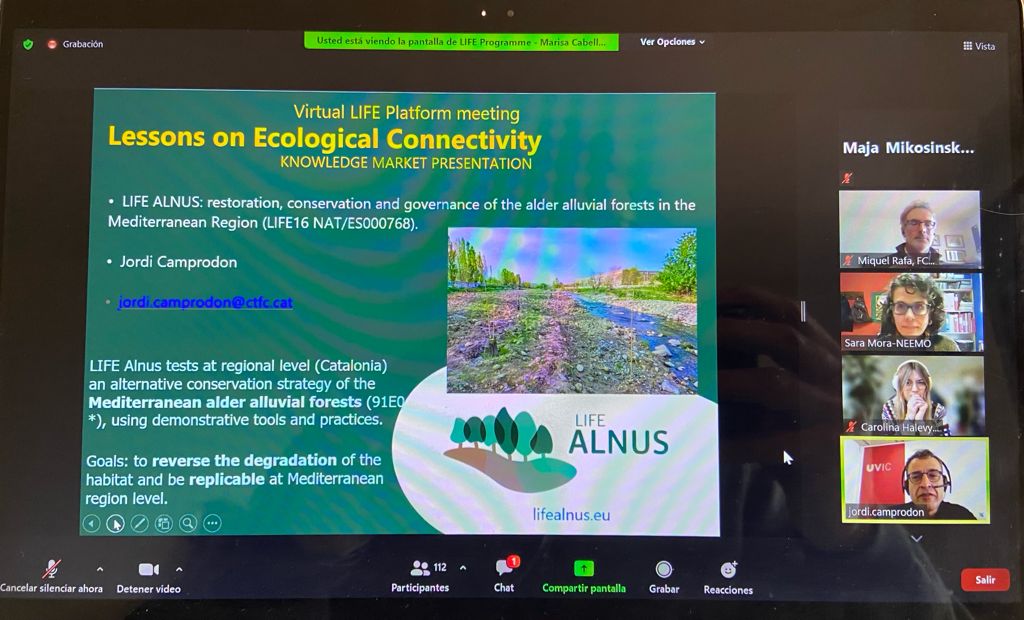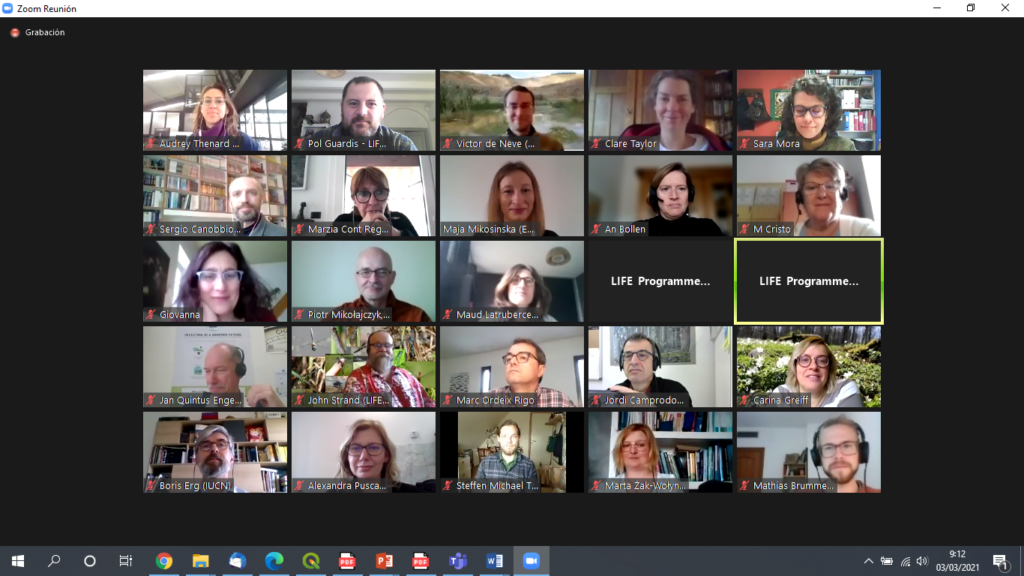The Life Alnus Project, host of the Platform Meeting on Connectivity
The Life Alnus project, coordinated by CTFC, hosted the Platform Meeting on Connectivity (Lessons from LIFE on ecological connectivity towards a coherent, functional and resilient network of protected areas), organized by the European funding instrument LIFE Program.
More than 80 LIFE projects have participated in a conference on the future of European connectivity, organized by the European Life program. This conference was a great success in terms of participation and exchange of experiences: in three days, almost a thousand people from governments of several Member States, international organizations, universities and research centers, non-governmental organizations, managers, technicians, scientists, etc. were connected.

The first day was focused on improving the identification of priority corridor areas, in order to increase their protection and achieve a coherent system and a functional European natural network. In other words, defining clear selection criteria to guarantee the multi-functionality of the landscape and achieve the objectives of connectivity, nature conservation and ecosystem services in the context of climate change, based on existing mapping and decision-making tools.
The second day was devoted to discuss and exchange experiences around governance from the perspective of LIFE projects working in various European natural areas, asking ourselves how ecological corridors can be better “governed”, that is, looking at different governance models and land ownership systems of LIFE projects, which ensure proper long-term management and successful conservation of this ecological connectivity.
The third and final day of the conference was focused on how to secure funding for connectivity conservation, how to make better use of existing funding from European programs, while providing guidance on innovative funding mechanisms.
The Life Program
One of the great challenges posed by the LIFE Program is the extension and consolidation of the Natura 2000 Network. It is currently the largest coordinated multinational network of protected natural areas in the world. But the objective of effective, fully functional and coherent management of a network of areas with a high biodiversity value is still in the process of being achieved.

Fragmentation of the landscape and its habitats is one of the key drivers of biodiversity loss, mainly due to transport infrastructure, urbanization and the intensification of agricultural and livestock farming practices. These threats are now compounded by the increasingly significant effects of climate change on ecosystems, highlighting the importance of connectivity as a necessary tool to ensure biodiversity and the provision of ecosystem services in the long term.
With the newly adopted EU Biodiversity strategy for 2030, the EU aims to build a “truly coherent Trans-European Nature Network” by extending the current network, with the ambitious goal of legally protecting 30% of EU land and 30% of EU seas by 2030.
The LIFE Nature and Biodiversity program has directly contributed to the establishment of the Natura 2000 Network and the restoration and management of the Network’s own sites, as well as nearby sites beyond its strict boundaries and delimitation.

